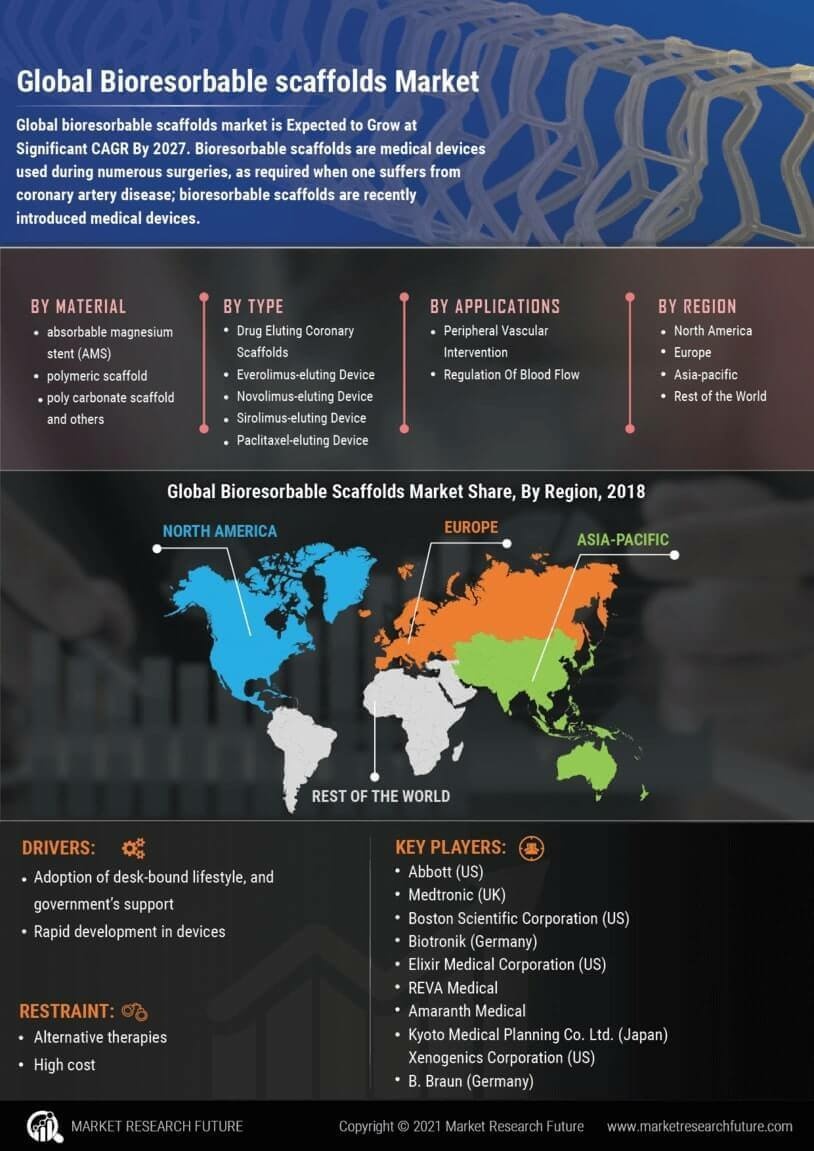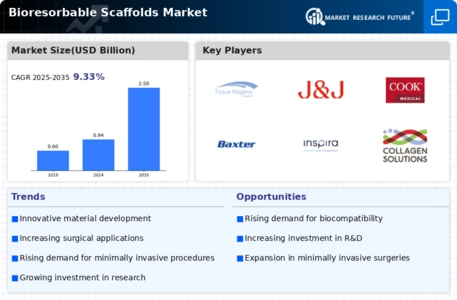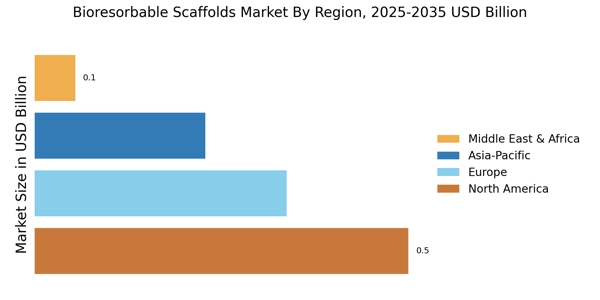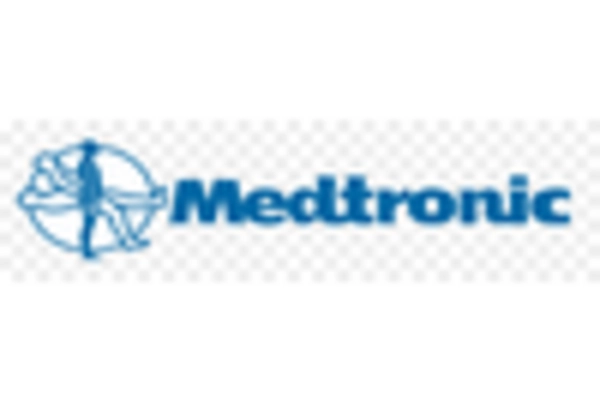Rising Incidence of Chronic Diseases
The Bioresorbable Scaffolds Market is also propelled by the rising incidence of chronic diseases, which necessitate advanced treatment options. Conditions such as cardiovascular diseases, orthopedic disorders, and certain cancers often require surgical interventions where bioresorbable scaffolds can play a crucial role. The increasing prevalence of these diseases is driving demand for innovative solutions that promote healing and tissue regeneration. Market analysis indicates that the incidence of chronic diseases is expected to rise by 20% over the next decade, thereby creating a substantial opportunity for bioresorbable scaffolds to become integral components of treatment protocols.
Supportive Government Initiatives and Funding
The Bioresorbable Scaffolds Market benefits from supportive government initiatives and funding aimed at advancing medical technologies. Various governments are recognizing the potential of bioresorbable materials in improving healthcare outcomes and are investing in research and development programs. These initiatives often include grants, subsidies, and partnerships with private entities to foster innovation in the field. Such support is likely to accelerate the development and commercialization of bioresorbable scaffolds, contributing to a projected market growth of around 8% in the next few years. This favorable environment encourages companies to explore new applications and enhance existing products.
Increased Focus on Biocompatibility and Safety
The Bioresorbable Scaffolds Market is experiencing heightened scrutiny regarding biocompatibility and safety. Regulatory bodies are increasingly emphasizing the need for materials that not only support tissue regeneration but also minimize adverse reactions. This focus has led to the development of bioresorbable scaffolds that are designed to be more compatible with human tissues, thereby reducing the risk of inflammation and other complications. As a result, manufacturers are investing in research and development to create safer products, which is likely to enhance market growth. The emphasis on safety is expected to drive a market expansion of approximately 10% in the coming years, as healthcare providers prioritize patient well-being.
Technological Innovations in Bioresorbable Scaffolds
The Bioresorbable Scaffolds Market is witnessing a surge in technological innovations that enhance the performance and applicability of these scaffolds. Recent advancements in materials science, particularly the development of novel polymers, have led to scaffolds that exhibit improved mechanical properties and degradation rates. For instance, the introduction of polycaprolactone and polylactic acid has shown promise in various applications, including orthopedic and cardiovascular fields. These innovations not only improve patient outcomes but also expand the range of surgical procedures that can utilize bioresorbable scaffolds. As a result, the market is projected to grow at a compound annual growth rate of approximately 15% over the next few years, driven by the increasing adoption of these advanced materials.
Growing Demand for Minimally Invasive Surgical Techniques
The Bioresorbable Scaffolds Market is significantly influenced by the rising demand for minimally invasive surgical techniques. As healthcare providers and patients alike seek alternatives to traditional open surgeries, bioresorbable scaffolds offer a compelling solution. These scaffolds facilitate tissue regeneration while minimizing trauma to surrounding tissues, leading to quicker recovery times and reduced hospital stays. The market has seen a notable increase in the adoption of these techniques, with a reported growth rate of around 12% in minimally invasive procedures. This trend is expected to continue, as advancements in surgical technologies and techniques further integrate bioresorbable scaffolds into routine practices.


















Leave a Comment